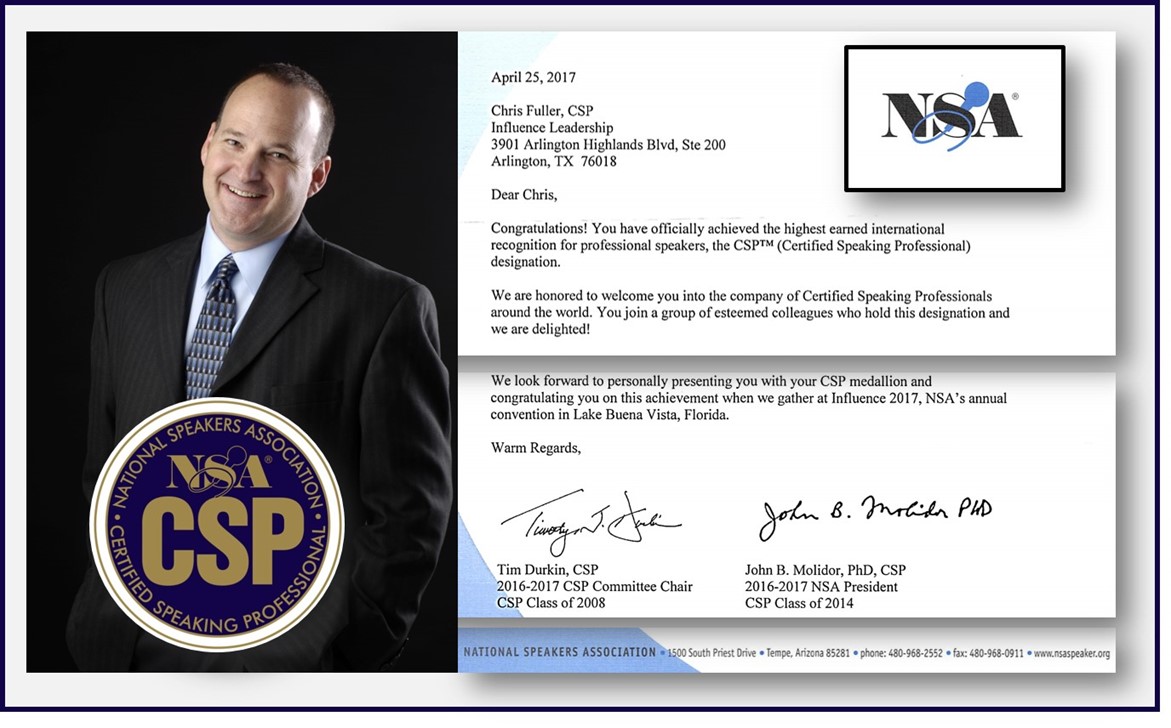7 Ways an InSPIRED Culture Keeps the Best People
Lack of direction, definition, and subsequent re-work exhausts the team, leads to missed deadlines, and lowers productivity.
About $1 million is wasted every twenty seconds due to poorly executed business strategies. You might as well light your revenue on fire, because poor execution will send whatever you earn up in smoke.
When you hamper productivity, blow through finances, and destroy relationships—even unintentionally, you create the unholy trinity of culture gone wild.
In the end, when you fail to execute, you’re not only hurting the bottom line, but also betraying the trust of your people. Who puts faith in someone who can’t be trusted to complete the plan? When trust leaves, commitment isn’t far behind.
If you promise an inspirational culture but don’t deliver execution, inspiration turns to exasperation, especially for the top talent you need to stay engaged on your team. Remember, talent always has a choice.
The best people want to get things done, not stagger in and out like zombies.
On the other hand, a team that drips Inspired Culture can plan to catch—and keep—top talent that keeps them on the rise.
You Can’t Afford to Miss This
If you’ve had the privilege of working in an InSPIRED culture, you’ve already experienced some of its benefits. But you may not have realized how deeply this kind of culture can impact the entire organization.
In my years of working with companies and helping them build InSPIRED cultures, here are some of the benefits I’ve discovered.
InSPIRED culture…
- Attracts the top talent.
Talent always has a choice, particularly in today’s highly mobile work environment where the best individuals can freely choose where to invest their skills. So, why would they choose you? A healthy culture produces all the intangible quality-of-life benefits that top talent demands. The importance of good recruitment becomes evident in creating an environment where individuals not only appreciate the leader, are treated fairly, and feel connected to a sense of purpose, but also see your organization as the optimal choice for their career growth. Even if they may have opportunities to make more money elsewhere, the right recruitment strategy can position your team as the preferred destination for those seeking a fulfilling and purpose-driven professional journey.
But what will you do when employer actions show clear bias? It’s essential to recognize that even in the most attractive work environments, issues of bias and unfair treatment can arise. Addressing these issues promptly and transparently is crucial to maintaining trust and keeping top talent engaged. This is where a positive impact a flexible employee benefits platform, like https://avantusemployeebenefits.co.uk/, comes into play. Such platforms offer the capability of sending notifications and updates, ensuring employees are always informed about their benefits and, by extension, any actions taken by the employer. This transparency not only fosters trust but also enhances the overall employee experience by demonstrating a commitment to fairness and equality within the organization.
- Maximizes top talent. A healthy culture is a pro-growth culture that seeks to empower everyone on the team to deliver his or her best in the areas of their greatest strengths. If you think it’s too much trouble to maximize your current talent, try not doing it. You’ll soon be left with only the employees who lack both the skills needed at present and the ambition to grow in the future. Not good. In this competitive landscape, some companies turn to agencies like EUWorkers to source skilled professionals.
- Retains top talent. According to the Qualtrics Global Employee Pulse 2017 study, “employees who have passed online dbs checks with a high confidence level in their company’s senior leadership are five times as likely to remain with their employer for more than two years compared to employees with no confidence.” It’s that simple. If your people believe in you as a leader, they’ll stay. If not, they’re five times as likely to leave.
- Increases productivity. When your employees are engaged, you’ll get more done with fewer people because you won’t be carrying the weight of disengaged employees. At the end of the day, a healthy culture grows the bottom line (and possibly, your own performance bonus). And I’ve seen firsthand how perks can transform a company’s atmosphere. By giving employees the right incentives, you foster a sense of belonging and respect. It’s no wonder that platforms like https://perkpal.co.uk/ have gained popularity for helping companies enrich their employee benefits. Perks should not be an afterthought but an integral part of your company’s strategy. After all, employee happiness and productivity go hand in hand.
- Frees you to focus on the future. It’s amazing how proactive you can be about tomorrow when you’re not having to put out fires today.
Is Your Team INspired or Exasperated?
What are the marks of inspired culture?
1. INtentional. An InSPIRED culture begins to form when you get intentional. Some companies and leaders try to succeed without ever understanding why. But how can you replicate what you don’t understand?. Excellence is never an accident.
2. Service. More than ever, service matters. An InSPIRED culture serves both external and internal customers. How people experience your team or organization over time becomes their expectation. Their expectation of you becomes your brand.
Is your brand one that serves others well, or is it a self-serving brand? Do you even know?
3. Passion. What fires you up? What passions fuel your best performance? Inspiration may influence you, but passion moves you and motivates the people you lead. At the end of the day, it doesn’t matter what your product or service is—if you’re in leadership, you’re in the people business. And people run on passion.
4. Integration. Everything is connected in your organization. But how well do all the parts and pieces work together? The gears and sprockets that make up the inner workings will determine whether you produce inspired results or the clock expires on your results.
If you’ve ever found yourself thinking, “It really shouldn’t be this hard,” then you know the pain of disintegration.
5. Real. As much as business leaders focus on hard data like production numbers and the bottom line, real people touch everything and determine long-term success. Everyone is wired for greatness, but not everyone is wired for greatness in the same areas.
Consequently, the best leaders develop a team of people who lead where they’re strong and team where they’re weak. To do that, you must first get to know the people you lead in a real way.
6. Execution. Why do you need to inspire? Results. And to get results, your team has to execute. If you don’t actually get things done with an accountability cadence, all your work becomes merely a relational exercise.
The reason you need to be intentional, service-focused, passionate, integrated, and real is so you can execute with excellence to achieve optimal results.
7. Develop. Once you achieve excellence, the question becomes: can you sustain it tomorrow, next week, and next year? The best leaders know they can’t stand still—they must continue to develop. So how do you and your team do that? By choosing to get better every day. Leaders must choose to develop continually.
Top Talent Always Has a Choice
If you promise an inspirational culture but don’t deliver execution, inspiration turns to exasperation, especially for the top talent you need to stay engaged on your team.
Remember, talent always has a choice. The best people want to get things done, not stagger in and out like zombies.
BUT—Imagine for a moment that in your particular sphere of influence you create a thriving culture where people are happy to come to work.
They love their jobs and are proud of the work they do. They push each other to greatness and, as a result, they execute with excellence. People are real with each other, because they are living with authenticity.
They follow their passions, because you’ve put them in the right seat on the bus.
They serve one another because they know a rising tide lifts all boats. And they aren’t stagnant, because you’ve created a plan to help them develop and grow.
Do you think a team like that would get noticed in your organization? You bet.




